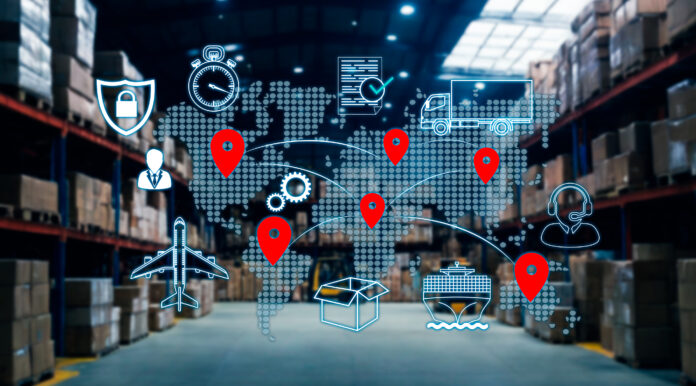
The logistics and transportation industry is experiencing a digital transformation with the advent of digital freight matching platforms. By leveraging Artificial Intelligence (AI), these platforms are revolutionizing load optimization, making freight matching more efficient and cost-effective. This article explores the benefits, applications, and best practices of using AI in digital freight matching platforms.
Understanding Digital Freight Matching Platforms
What are Digital Freight Matching Platforms?
Digital freight matching platforms are online marketplaces that connect shippers with carriers. These platforms use advanced algorithms and AI to match freight loads with available trucks, optimizing routes, reducing empty miles, and improving overall efficiency.
Role of AI in Load Optimization
AI in digital freight matching platforms analyzes vast amounts of data from various sources, such as GPS, weather forecasts, and traffic conditions, to optimize load matching. AI algorithms can predict demand, optimize routes, and ensure that loads are matched with the most suitable carriers in real-time.
For a comprehensive overview of digital freight matching platforms, refer to FreightWaves.
Benefits of Leveraging AI for Load Optimization
Increased Efficiency
AI algorithms can process and analyze data faster than human capabilities, resulting in quicker and more accurate load matching. This increases the efficiency of freight operations, reducing idle times and ensuring timely deliveries.
- Example: An AI-driven platform matches a shipper’s load with a nearby truck that is already en route to the destination, minimizing waiting time and optimizing route efficiency.
Cost Reduction
By optimizing load matching and routes, AI reduces operational costs. It minimizes empty miles (when trucks travel without cargo), lowers fuel consumption, and reduces the need for manual intervention.
- Example: A digital freight matching platform uses AI to consolidate multiple small shipments into a single load, reducing transportation costs for shippers.
Enhanced Visibility and Transparency
AI provides real-time tracking and visibility into freight movements. Shippers and carriers can monitor their loads, receive updates on delivery status, and anticipate potential delays.
- Example: A shipper uses a digital platform to track a shipment in real-time, receiving notifications about its location and estimated time of arrival.
For further insights into the benefits of AI in logistics, explore McKinsey’s Report on AI in Logistics.
Applications of AI in Digital Freight Matching Platforms
Predictive Load Matching
AI algorithms predict future demand and match loads with available capacity based on historical data, market trends, and other influencing factors. This proactive approach ensures optimal resource utilization.
- Tool: Machine learning models like regression analysis and neural networks are used to predict demand and optimize load matching.
Dynamic Pricing
AI enables dynamic pricing by analyzing market conditions, demand fluctuations, and other variables. This ensures competitive pricing for shippers and fair compensation for carriers.
- Tool: AI-driven platforms use algorithms that adjust prices in real-time based on supply and demand dynamics.
Route Optimization
AI optimizes routes by analyzing real-time traffic data, weather conditions, and road restrictions. This helps in selecting the most efficient routes, reducing transit times and fuel consumption.
- Tool: Route optimization algorithms like Dijkstra’s and A* are commonly used in AI-driven freight platforms.
For more information on AI applications in freight matching, visit Deloitte’s Insights on AI in Transportation.
Best Practices for Implementing AI in Digital Freight Matching
Data Integration and Management
Effective data integration from various sources such as GPS, traffic systems, and weather forecasts is crucial. Ensure that data is accurate, up-to-date, and easily accessible for AI algorithms to process.
- Practice: Use data lakes or warehouses to consolidate and manage data from multiple sources.
- Benefit: Enhanced data reliability and accessibility for AI-driven decision-making.
Selecting the Right AI Tools
Choose AI tools and frameworks that are compatible with your platform and tailored to your specific needs. Open-source tools like TensorFlow, PyTorch, and commercial platforms like IBM Watson offer diverse capabilities.
- Practice: Evaluate AI tools based on scalability, ease of integration, and support.
- Benefit: Ensures efficient deployment and scalability of AI solutions.
Continuous Monitoring and Improvement
Implement continuous monitoring systems to track the performance of AI algorithms and make necessary adjustments. Regularly update models with new data to maintain accuracy and relevance.
- Practice: Set up dashboards and alerts to monitor key performance indicators (KPIs).
- Benefit: Ensures ongoing improvement and adaptation to changing market conditions.
For guidelines on best practices, refer to Gartner’s Guide on AI in Transportation.
Challenges and Future Trends
Data Privacy and Security
Ensuring data privacy and security is a significant challenge when integrating AI with digital freight matching platforms. Implement robust security measures to protect sensitive information and comply with regulations.
Integration Complexity
Integrating AI with existing freight management systems can be complex and require significant changes to infrastructure. Collaboration between IT and operations teams is crucial for successful implementation.
Future Trends
- Edge AI: Deploying AI at the edge, close to data sources, to reduce latency and enhance real-time decision-making.
- Autonomous Freight Matching: Using AI to fully automate the freight matching process, reducing the need for human intervention and increasing efficiency.
For more on future trends, explore Forrester’s AI Predictions.
Integrating AI for Enhanced Freight Efficiency
Leveraging AI in digital freight matching platforms offers transformative benefits for load optimization, including increased efficiency, cost reduction, and enhanced visibility. By implementing best practices such as data integration, selecting the right AI tools, and continuous monitoring, logistics companies can optimize their operations and stay competitive. As AI technology evolves, staying abreast of emerging trends like edge AI and autonomous freight matching will further enhance the capabilities and efficiency of these platforms.




